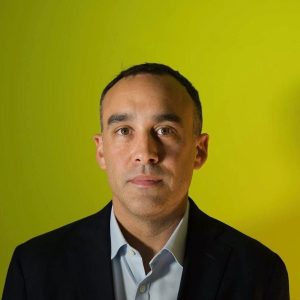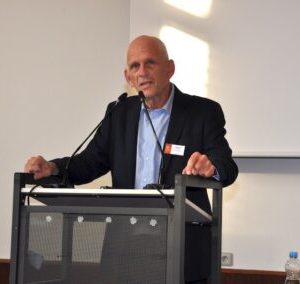

Since 2020, EASL has been building new opportunities to engage with umbrella patient organisations both at the national and European level. Aiming to share best practices, inspire joint initiatives and activities by involving them in the creation of EASL educational content, EASL Clinical Practice Guidelines, advocacy initiatives and coordinate and convey relevant messages.
To do so, an affiliation group has been created called “Patient Synergies”.
The joint goals include:
- Taking into account the patient experience,
- Consulting on patient views on quality of life,
- Better understanding patient needs from healthcare professionals
- Promoting the prevention of liver conditions through EASL’s Advocacy work and the creation of educational material.
Every year, EASL holds a patient forum to give the floor to patients’ groups on topical issues. This year, the discussion will focus on health literacy to address inequities. Health literacy is the extent to which individuals are able to obtain, understand, process and use basic health information and services that they need to make appropriate and well-informed health decisions. Europe faces a health literacy crisis with health systems becoming more and more difficult to navigate, even for more educated people. Actions are needed at all levels and it is crucial to have patients’ views and needs guiding the change.
Therefore, on the occasion of the coming EASL Patient Forum 2021: Health literacy to empower patient and address inequities, (Monday 22 November 2021 15:00-16:30 CET) we’ve decided to present you some of the Patient Associations EASL is currently working with. Livia Alimena from the Global Liver Institute, George Kalamitsis from Liver Patient International, Eberhard Schutz from C-EHRN, and Androulla Eleftheriou from Thalassaemia International Federation have kindly accepted to present their associations and to share how they became Patient Advocates.
Could you please describe your organisation in a few words?
LPI is an international umbrella organisation, founded in 2019, that represents and welcomes national liver patient support organizations. Liver Patients International, strives to achieve its goals: breaking barriers and placing the patient and their voice at the centre of all that we do.
It is our core belief that by working together, we can ensure that all our members have access to the resources, tools and support that will enable them to influence policy makers and ensure them the best possible outcomes. Trust and transparency are core to our values and key in securing and maintaining successful relationships with both our members and all stakeholders.
Working with integrity is paramount. LPI’s Board of Directors and members are tasked at all times with upholding the organisation’s reputation and interests.
We are committed to evolve, this ambition cannot be under-estimated. Our goal is to take the voice of patients affected by all liver diseases at an international level and to give patients a key-role in improving other patients’ lives.
How did you become a Patient Advocate?
Personal experience is the answer. I was a HepC patient in the past and after overcoming it I became a representative of the patients’ voice. My focus daily is on providing support to people living with liver diseases, as well as on advocating for their rights. My mission is to always be committed and advocate for people suffering from not only Viral Hepatitis, but liver diseases in general. As a former HCV patient, I am dedicated to raising awareness, promoting prevention, and supporting marginalised populations disproportionately affected by liver diseases.


George Kalamitsis
President of Liver Patient International (LPI)
It is our core belief that by working together, we can ensure that all our members have access to the resources, tools and support that will enable them to influence policy makers and ensure them the best possible outcomes.
As a former HCV patient, I am dedicated to raising awareness, promoting prevention, and supporting marginalised populations disproportionately affected by liver diseases.


Livia Alimena
European Office and IND Director at Global Liver Institute (GLI)
GLI is committed to solving the problems that matter to liver patients, equipping advocates to improve the lives of individuals and families impacted by liver disease.
I am a changemaker, and I like to work with leading scientific societies […] to improve health policies at international level.
Could you please describe your association in a few words?
The Global Liver Institute (GLI) is the only patient-created and patient-driven nonprofit organization tackling liver health and all liver disease holistically. Rooted in the belief that liver health must take its place on the global public health agenda commensurate with the prevalence and impact of liver illness, GLI promotes innovation, encourages collaboration, and supports the scaling of optimal approaches to help eradicate liver diseases. Operating globally, GLI is committed to solving the problems that matter to liver patients, equipping advocates to improve the lives of individuals and families impacted by liver disease.
Our impact in a few figures and numbers:
- International NASH Day builds global awareness of this disease. IND 2021: 120 partners, 36 countries. #NASHDay, 11.5 million impressions.
- Liver Cancer Lessons videos for patients and practitioners.
- #OctoberIs4Livers campaign: in 2020, 100 million people reached, global proclamation spanning 17 countries.
- Advanced Advocacy Academy trains patients as advocates: 162 alumni over four years in the United States, 13 other countries.
- The Liver Action Network, members in 40 states. • Reaching national, global audiences via extensive speaking engagements from our founder/CEO.
- NASH Council, Liver Cancers Council, Pediatric and Rare Diseases Council engage 133 members: practitioners, advocacy organizations, pharma innovators.
- Beyond the Biopsy for liver diseases: 988,800 social media impressions.
Last but not least, you can follow GLI on Twitter, Facebook, Instagram, LinkedIn, and YouTube.
How did you become a Patient Advocate?
I decided to become a patient advocate first and foremost to serve and empower patients, but also to play an active role in the international healthcare system, sharing clinicians’ and patients’ goals and doing what’s right for the patient while having the added benefit of a holistic view.
I am a changemaker, and I like to work with leading scientific societies, like EASL, AASLD, APASL, ALEH, UEG, ESPGHAN and many more,with patient associations and international organizations like the WHO and, with European and national policy makers to improve health policies at international level.
One example is the International NASH Day that I am honoured to manage globally on behalf of GLI, to raise awareness of NASH globally. Because we believe that liver diseases must have a place in the global public health agenda.
Could you please describe your organisation in a few words?
Established in 2004 and with currently more than 220 members in 32 European countries, The Correlation – European Harm Reduction Network (C-EHRN), hasecome the largest network on Harm Reduction and Health and Social Inclusion in Europe. The aim of the network is to link various expertise and experiences to enhance outcomes and impact by combining practice, research and policy. C-EHRN is hosted by the Regenboog Groep in the Netherlands. In 2013, it established the ‘Hepatitis C Initiative’, the first pan European collaboration on HCV and drug use.
The Hep C Initiative aims to enhance the momentum of current HCV treatment opportunities and strives for universal access to essential HCV prevention and treatment for the most affected and under-served communities: people who use drugs. The Initiative works towards improving the knowledge-base on hepatitis C and drug use policies and practice, improving the capacities of professionals including target group representatives in harm reduction services and NGOs that specifically target drug users and influence HCV policies on the national and European level. For this purpose, we maintain a coordination office (1), an advisory board and 3 thematic HUBs: (2) research and monitoring, (3) capacity building and (4) advocacy.
How did you become a Patient Advocate?
Becoming a patient advocate is almost obvious if you work in the area of hepatitis and people who use drugs. This community is currently the most affected by HCV in the world and faces a lot of barriers and stigmatization making access to testing, treatment and care very limited, if not impossible. To overcome these barriers is one of my personal motivations to get engaged in advocacy for universal access.


Eberhard Schatz
CN Coordination at The Correlation – European Harm Reduction Network (C-EHRN)
The aim of the network is to link various expertise and experiences to enhance outcomes and impact by combining practice, research and policy.
To overcome these barriers is one of my personal motivations to get engaged in advocacy for universal access.


Androulla Eleftheriou
Executive Director at the Thalassaemia International Federation
Thalassemia International Federation is an umbrella organisation of 132 National Thalassaemia Patients’ Associations from 60 countries and is dedicated to promoting equal access to appropriate care for all patients with thalassaemia.
The breaking point came when I was appointed to the laboratories of the Cyprus Thalassaemia Centre, where I exercised my training in virology detecting transfusion-transmitted viruses. There I experienced the anxiety of chronically suffering patients, their concerns about safety of blood and about their survival in general, their need to avoid complications and the burden they were carrying along with their families.
Could you please describe your association in a few words?
Thalassemia International Federation (TIF), is an international non-profit, non-governmental organization that has beenbased in Cyprus since its establishment in 1986. It is an umbrella organisation of 132 National Thalassaemia Patients’ Associations from 60 countries and is dedicated to promoting equal access to appropriate care for all patients with thalassaemia.
TIF works in official relations with the World Health Organization (WHO) since 1996 and enjoys active consultative status with the United Nations Economic and Social Council (ECOSOC) since 2017. Moreover, it is a strategic partner of the European Commission under the Third Health Programme since 2018 and a member of the Patients and Consumers Working Party (PCWP) of the European Medicines Agency (EMA) since 2010. In 2019, TIF obtained a participatory status at the Council of Europe, as a Member of the Conference of International NGOs. TIF was awarded, in the context of the 68th World Health Assembly in May 2015, the ‘Dr Lee Jong-wook Memorial Prize’ for its outstanding contribution to public health.
Its extensive educational programme includes a series of educational publications as well as educational events, conferences and workshops, aiming to spread awareness and promote effective control programmes across the world. https://thalassaemia.org.cy/
How did you become a Patient Advocate?
My training has been as a laboratory scientist and I had no vision during my graduate and postgraduate training, of volunteerism or the real needs of patients. In fact, I had very little contact with patients even in my early years in hospital laboratories.
It all began when I married a doctor, a really caring doctor in general practice, who gave me the first insights into what illness meant to patients and their families.
However, the breaking point came when I was appointed to the laboratories of the Cyprus Thalassaemia Centre, where I exercised my training in virology detecting transfusion-transmitted viruses. There I experienced the anxiety of chronically suffering patients, their concerns about safety of blood and about their survival in general, their need to avoid complications and the burden they were carrying along with their families. In the environment of the centre it was easy to meet and to get to know patients who were anxious to talk and share their experiences and anxieties.
The spirit of wanting to do more grew over time. The need to share and to contribute became stronger and came to a head when in 1994 I volunteered to help the patients’ association in the organisation of an international conference. This was the beginning of an active involvement which over time led me to abandon my laboratory career for a full time involvement with the national and then the international organisation, Thalassaemia International Federation, to which I was appointed an Executive Director in 2006.



This Post Has 0 Comments